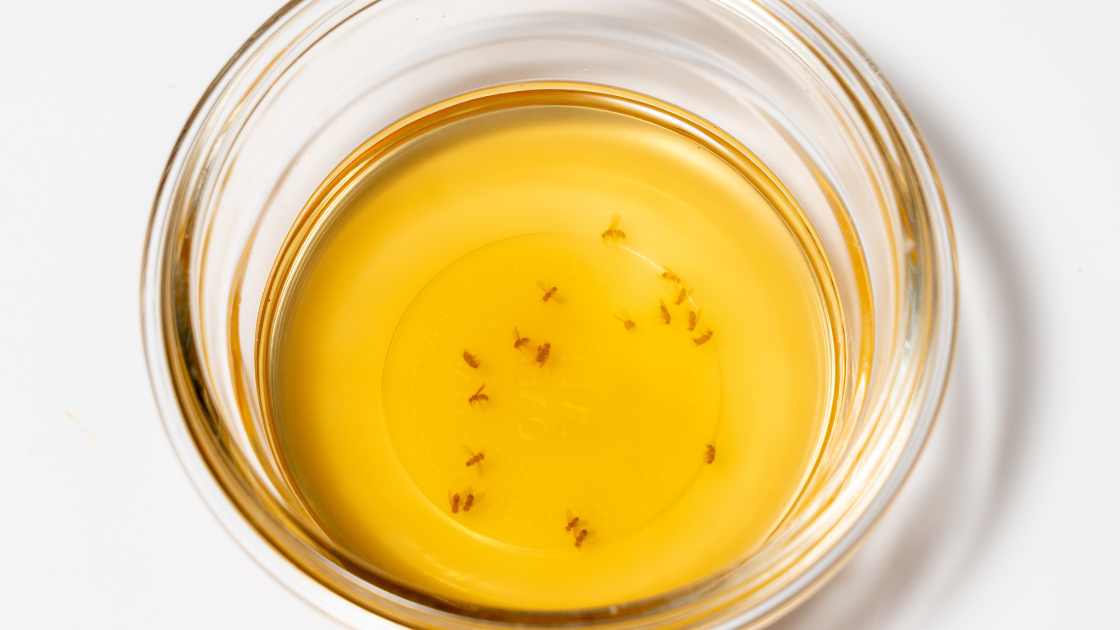To remove water drip marks from painted walls, gently rub the area with a damp cloth and mild detergent. Rinse with a clean, water-dampened cloth and dry thoroughly.
Dealing with water drip marks on painted walls can be a nuisance, but it doesn’t have to ruin your décor. Over time, accumulation of moisture, such as from condensation or spills, can leave unsightly streaks or stains. These marks not only detract from the aesthetic of your walls but can also indicate higher humidity levels that might require attention.
Maintaining the pristine look of your painted walls is crucial for their longevity. A simple yet effective cleaning routine is essential, especially when dealing with issues like water drip marks.

Understanding how to remove water drip marks from painted walls is key to preserving the integrity of the paint. With the right cleaning techniques, you can easily tackle these water streaks without the need for repainting or resorting to expensive cleaning services. Take a careful approach to ensure that your wall surface remains mark-free and in top-notch condition.
Introduction To Wall Maintenance
Maintaining painted walls is key to a clean and inviting home. Over time, essential marks and stains can appear, but water drips pose a special challenge.
They can be unsightly and may even lead to long-term damage if not addressed. This guide provides simple solutions to keep your walls looking fresh and mark-free.
The Challenge Of Water Marks On Painted Walls
Watermarks on walls are more than just a visual nuisance; they can be tough to remove. The minerals in the water can discolor the paint, leaving behind streaks or spots that mar the wall’s surface. Identifying the cause of the water stain is essential before attempting to clean it.
The Importance Of Addressing Water Drips Promptly
Acting quickly when you spot a watermark makes a big difference. Left too long, water drips can seep into the paint and drywall, leading to potential mold growth and the need for more extensive repairs. A prompt response can prevent these issues, saving time and money.
- Inspect the area for the source of water.
- Dry the spot with a clean cloth.
- Apply a mild cleaning solution if needed.
With these steps, most watermarks will fade away, leaving your walls as vibrant as before.
Identifying The Type Of Paint And Water Stain

Ever stared at water drip marks on your beautiful walls feeling helpless?
Knowing what you’re dealing with is key to a spotless, drip-free wall.
Identifying The Type Of Paint On Your Walls
Wall paints come in various finishes. Eggshell and satin finishes are a bit shiny and wipeable. Matte and flat paints, In contrast, are more porous. They absorb water, making marks trickier to remove. Glossy finishes are durable and easiest to clean.
Differentiating Between Types Of Wall Paint
A simple test helps identify the finish:
- Flick some water on the wall.
- Watch how it behaves.
If it beads up, you’ve got something durable like semi-gloss.
If it soaks in, you’re likely dealing with matte or flat.
Assessing The Severity Of Water Drip Marks
The severity of water stains matters. Light marks might wipe away with a gentle touch. For darker stains, you’ll need a focused plan of attack.
Time is of the essence in treating water stains.
Preparation For Cleaning Painted Walls

When it comes to maintaining your home, keeping painted walls clean is essential. Over time, water drip marks can create unsightly blemishes on your walls.
Proper preparation is key to removing these marks without damaging the paint. Let’s set the stage for a successful cleaning session.
Gathering Necessary Supplies
Before tackling water drip marks, make sure you have the right tools on hand:
- Gentle cleaning solution – A mix of warm water and mild detergent works well.
- Soft sponges or cloths – To apply the cleaning solution without scratching the wall.
- The buckets Table was added for visual clarity
Bucket Purpose Description Application For the soapy water mixture. Rinsing Filled with clean water for rinsing walls. - Protective gloves – To protect your hands from cleaning agents.
- Step ladder – For reaching high spots safely.
Protecting The Surrounding Area Before Cleaning
Take measures to ensure the rest of your room stays clean:
- Move furniture – Shift furniture away from the walls to give yourself space.
- Lay drop cloths – Protect your floors against any drips or spills.
- Secure the area Unordered list within the ordered list item for detail
- Keep pets and children away from the cleaning area.
- Use painter’s tape to cover trims and skirting boards.
With preparations complete, you’re ready to take on those water drip marks and restore your walls to their former glory.
Gentle Cleaning Techniques
Find gentle ways to clean water drip marks from painted walls with these easy tips. Protect your walls while making them look new.
Wiping Down With Mild Soap Solution
Bold dirt-busting starts with a simple soap solution.
Mix a few drops of dish soap with warm water. Dip a soft cloth in the mixture. Wring it well. Gently rub the marks in a circular motion. Always blot with a dry towel after cleaning.
Using Specialized Wall Cleaners For Stubborn Stains
Some stains need an extra touch.
- Pick a wall cleaner designed for painted surfaces.
- Test it on a small area first.
- Apply the cleaner with a sponge.
- Press gently, don’t scrub.
- Wipe clean with a soft cloth.
Advanced Cleaning Solutions
Effective cleaning techniques can restore your painted walls. In this section, we’ll discuss advanced ways to eliminate water drip marks from painted walls.
Trying Home Remedies Like Vinegar

Vinegar is a safe and natural cleaner that can tackle watermarks. Here’s a step-by-step guide:
- Mix equal parts of water and white vinegar.
- Dip a soft cloth in the solution.
- Gently rub the water drip marks.
- Wipe the area with a clean, damp cloth.
- Dry the wall with a soft towel.
When To Use Chemical Cleaning Agents
Sometimes, stains persist, and you must use chemical cleaners. Keep these tips in mind:
- Choose a non-abrasive cleaner designed for walls.
- Test the cleaner on a small, hidden area first.
- Apply the cleaner to a cloth, then tackle the stain.
- Rinse the wall with water to remove residue.
- Always follow the manufacturer’s instructions.
Remember to use protective gloves and ensure good ventilation when using chemical cleaning agents.
Touching Up Paint After Water Damage

Touching Up Paint After Water Damage can breathe new life into your walls. No longer must you stare at those unsightly water drip marks. With the right paint, tools, and technique, your walls can look as good as new. Follow this guide to restore the beauty of your painted walls effortlessly.
Selecting The Right Paint And Tools For Touch-ups
Choosing the best paint and tools is essential. Make sure the new paint matches your wall’s current color and finish. Have these tools ready:
- Quality paint in the matching color and finish
- Angled brush for precision
- Roller for even coverage on larger areas
- Primer to help cover water stains
- Sandpaper for smoothing the area
- Clean cloth to dust off the surface
Step-by-step Guide To Repainting Affected Areas
Fixing up water-damaged paint is a straightforward process. Follow these steps:
- Start by cleaning the wall with a damp cloth.
- Sand the water-damaged area lightly to remove imperfections.
- Wipe the area with a clean cloth to remove dust.
- Apply a coat of primer, let it dry as recommended.
- Stir the paint well before applying.
- Use the angled brush for edges and small spots.
- Fill in larger sections with a roller for a smooth finish.
- Allow the paint to dry, then apply a second coat if needed.
To ensure consistency, blend the new paint into the existing painted areas.
Preventive Measures And Long-term Care
Preventive Measures and Long-Term Care are key to maintaining the pristine look of painted walls.
Water drip marks can mar the beauty of your walls. They create an unsightly patch that can seem impossible to clean.
In contrast, with the right approach, you can both prevent future water marks and maintain your walls in their best condition for years to come.
Investigate these tips to keep water marks at bay and ensure long-term wall care.
Tips To Prevent Future Water Marks
- Use water-resistant paint: Invest in high-quality, water-resistant paint, particularly in moisture-prone areas.
- Seal window edges: Check and seal gaps to prevent water seepage.
- Maintain gutters: Regularly clean gutters to avoid overflow onto walls.
- Fix leaks promptly: Address plumbing issues to prevent wall dampness.
- Proper ventilation: Ensure that rooms, especially bathrooms and kitchens, are well-ventilated.
Routine Wall Maintenance To Keep Walls Clean And Fresh
Maintaining clean walls adds life to your space and saves you time and money in the long run. Routine care is easy to manage with these steps:
- Dusting: Dust walls with a microfiber cloth regularly.
- Spot cleaning: Clean stains as soon as they appear using mild soap and water.
- Inspection: Check for cracks and fix them to prevent water intrusion.
- Gentle care: Avoid harsh chemicals that can damage paint.
Frequently Asked Questions Of How To Remove Water Drip Marks From Painted Walls
How Do You Remove Drip Marks From Painted Walls?
To remove drip marks from painted walls, gently sand the drips, then touch up the area with matching paint. Ensure the wall is clean before you start sanding or repainting for the best results.
How Do You Remove Water Leak Stains From Walls?
To remove water leak stains from walls, start by drying the area thoroughly. Mix a solution of bleach and water, apply it to the stains, and let it sit. Rinse with clean water, and repaint the affected area if necessary.
Always ensure good ventilation when using bleach.
How Do You Remove Water Stains Without Removing Paint?
To remove water stains without damaging paint, gently dab the area with a soft cloth moistened with distilled white vinegar. Rinse with a damp, clean cloth and dry promptly.
How Do You Get Rid Of Condensation On Painted Walls?
To remove condensation from painted walls, increase ventilation, use a dehumidifier, apply a gentle heat source, and absorb moisture with a dry towel. Ensure consistent room temperature to prevent recurrence.
Can you remove water marks from paint?
Removing watermarks from paint can be challenging, as it often involves addressing both the surface and underlying layers. Specialized cleaners and gentle abrasives may help, but it’s vital to test a small, inconspicuous area first to avoid damaging the paint.
What causes water marks on painted walls?
Watermarks on painted walls are often caused by water leaks or moisture infiltration. When water penetrates the wall surface, it can lead to discoloration and staining as it reacts with the paint, creating visible marks.
Conclusion
Erasing unsightly water marks from your painted walls needn’t be a daunting task. Armed with the right knowledge and tools, you can restore your walls to their flawless state. Remember, gentle cleaning solutions and soft cloths are your allies in this mission.
Tackle the problem promptly for the best results and enjoy your refreshed, mark-free walls with pride.

